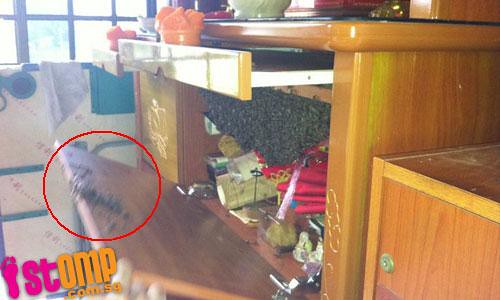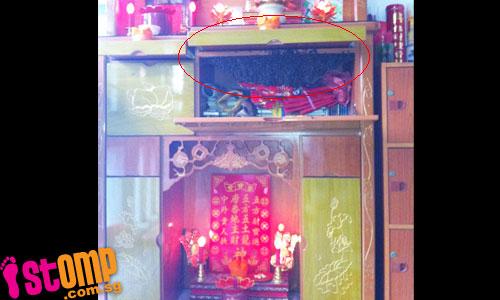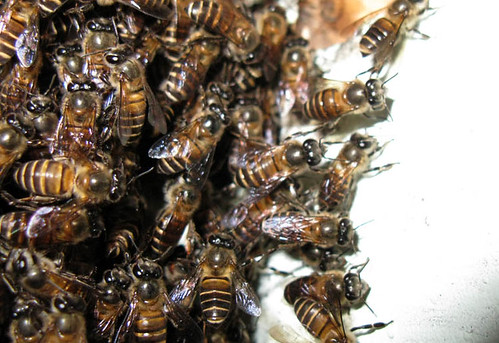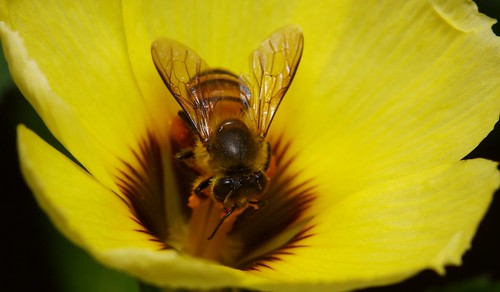
STOMPer Neo was shocked to find a large gathering of bees inside his altar cabinet in his HDB flat in Marsiling.
Neo said:
"On June 16 around noon, I saw a few bees flying around the altar in my house & I thought it was nothing.
"Around late afternoon, my mom called and claimed that more and more bees are around the altar.
"I went back home to check and was shocked to see the rows of bees outside the cabinet.
"We were even more shocked when we opened the cabinet to check.
"Full of bees inside the cabinet! It was even more gross and scary.
"We called the town council & waited for the pest control to come over."
On June 17, Neo added over the phone:
"Yesterday, they took about three hours to form a swarm. Today there is already formed a distinct shape. My father got stung this morning.
"When I called pest control, they said since the bees gathered around my altar, it must be bring me luck."




It's not anything particularly strange, lucky, or even spiritual in nature; these honeybees (Apis spp.) were swarming, in search of a new location for their colony, and happened to find a suitable spot. The individuals the person had seen earlier on were most likely scouts that had been investigating the suitability of his altar.

Colony of Asian honeybees (Apis cerana);
(Photo by Marcus)
I wrote previously about the honeybees of Singapore in this post, with a focus on the giant honeybee (Apis dorsata). I'm not too sure which species of bee is involved in this incident, although given that this swarm of bees picked a crevice of sorts, I'm inclined to think that these are Asian honeybees. After all, the other 2 species of honeybee found in Singapore have a preference for nesting in the open on tree branches. I briefly covered the Asian honeybee in this post, in relation to how the Japanese populations of Asian honeybee respond to attacks by hornets.

(Photo by [ Wesley Sng Photography ])

I recently had the pleasure of picking up this book at the library. Honey Bees of Borneo: Exploring the Centre of Apis Diversity is a detailed look at the ecology, behaviour and reproduction of the honeybees found in Borneo, which is home to 5 of the 9 recognised honeybee species. A lot of the information is relevant to honeybees elsewhere in Southeast Asia as well, including discussions of predators, diseases and parasites, as well as interactions between honeybees and people. It would be interesting to see if community gardening in Singapore starts exploring the feasibility of raising urban colonies of honeybees for honey.